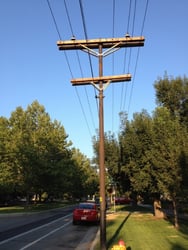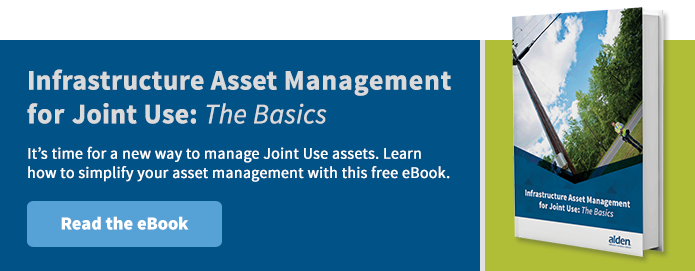Infrastructure Asset Management and Change: Predicting the Future
 With U.S. infrastructure aging in a big way, utility pole owners will soon be faced with a dilemma: replace or repair a large number of vital assets, or get smart fast with a new take on infrastructure asset management designed to predict when equipment will likely need attention. So how does one anticipate the future health of an asset? It's all about having good data.
With U.S. infrastructure aging in a big way, utility pole owners will soon be faced with a dilemma: replace or repair a large number of vital assets, or get smart fast with a new take on infrastructure asset management designed to predict when equipment will likely need attention. So how does one anticipate the future health of an asset? It's all about having good data.
According to Alden CEO John Sciarabba, "We have to get away from just keeping up with the data of the thing, and start looking at the causes of degradation or failure in equipment. Or, on the positive side, figuring out why some assets last longer than anticipated." The goal here is to mine the past for clues to predicting the future so companies can spend money on the things that create a desired outcome—safe, reliable service.
Being able to accomplish the magic of prediction starts with having great data—and the tools to leverage it. The usefulness of that information also has a predictable progression, with one thing building upon the next.
First comes data itself.
It might sound simplistic, but if you are not collecting data, you are not going to be able to move up the hierarchy. Contracting the help of a full-service infrastructure asset specialist with the tools and experience to collect the right information, and then present it in a way that is easily leveraged, is vital to getting the process started right.
Good data in context creates information.
Next, having data is great, but without the ability to view it as a complete picture of an asset’s health and history, it is just ingredients—not a whole solution. "We are at a point where, because of technology, we can collect more data than you can make sense of," adds Sciarabba. "It is when you put it into context where you can start looking at what kinds of relationships there may be among assets, conditions or other factors."
Information begets knowledge.
Once you can view data over time and as part of a larger picture, it is then that one starts to derive meaning—seeing patterns. Only then can owners begin to consider a plan of action based on verifiable principles driving what is happening in the field.
Knowledge becomes wisdom.
This step is where robust infrastructure asset management tools and processes work to transition knowledge into insight or wisdom. Wisdom means understanding what the information is saying on a large scale, and being able to apply that to action that will successfully meet an organization’s goals, whether they are prolonging asset life, mitigating risk, improving safety or driving revenue.
Finally, wisdom leads to decision.
With all the facts, the ability to use data to see the big picture, the context to understand the meaning behind the information and the foresight to create a plan that uses all the pieces to make change, owners can predict what may happen to equipment in the field. Perhaps most valuable is the ability to make decisions based on how long assets may last and when they may need repair or replacement, then define a course of action that makes all of those things doable over time, in an order and at a volume that makes sense and saves dollars.

Comments